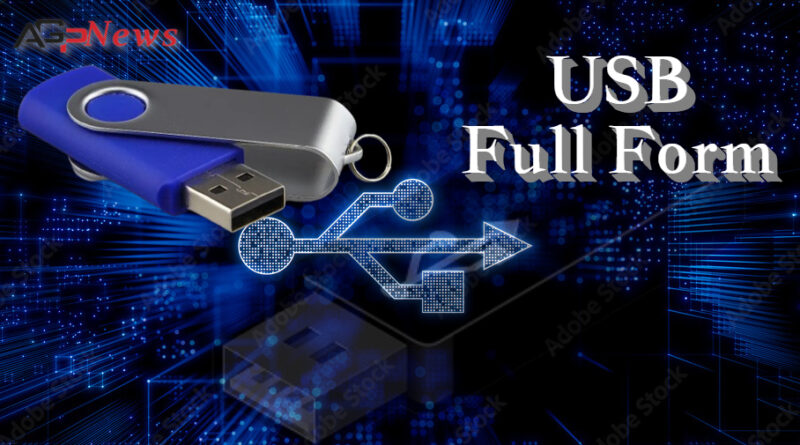USB Full Form: What is USB?
USB Full Form: What is a USB?
USB Full Form: A Universal Serial Bus (USB) is a standard used for connection, communication, and power supply between computers and electronic devices. It facilitates the transfer of data and power between devices. Connecting a USB device to a computer is simple: just insert the USB device into the computer’s USB port, and the computer will detect and start working with it.
USB Full Form: Advantages of USB
- Universal Connectivity: You can connect various devices using the same cables and connectors.
- Consistency: Once connected, a device typically uses the same port on the computer.
- Compatibility: USB supports a wide range of devices, including remote controls, external hard drives, digital cameras, and more.
- Power Management: Computers can manage power and battery balance when connected to high-capacity battery packs.
- Development Ease: Programmers can compile multiple programs using a single codebase.
- Reliability: USB connections are known for being safe and reliable.
- Speed: USB provides fast data transfer rates.
USB Full Form: Types of USB
- Standard
- Fast
- Full-Form
- High-Speed
- Extended
- Wireless
- Low Power
- Memory Stick
- Display Link
- Screen Capture
- Mirroring Display
- Pillar RAID
- HDMI Display
Each USB type serves different purposes and functions. A controller, located at the end of the cable (also known as the “cable plug” or “USB plug”), is essential for operating a host device like a digital camera, videocassette recorder, or personal computer. USB Full Form
Uses of USB: USB Full Form
- Applications: USBs are used in various applications, such as connecting peripherals like printers, media players, and external hard drives to computers.
- Technical Components: USB devices contain specific components that facilitate communication and power supply.
- Supported Devices: Many devices, including phone chargers, MP3 players, and digital cameras, can be powered through USB ports.
Benefits of USB: USB Full Form
- Universal Port: All peripherals can be connected to a single high-speed port.
- Ease of Use: The USB plug makes it easy to connect peripherals.
- Versatile Placement: USB ports can be located on the back or side of computers and mobile devices.
How to Connect a USB Device to a Computer
- Connect the USB device to the computer’s USB port using a USB cable.
- Insert the USB device into the computer.
- The computer will detect the device, allowing you to browse its options.
Resetting USB Devices
To reset a USB device to factory default settings: USB Full Form
- Press and hold the “-” button on the device.
- The device will reset to its factory defaults.
Disadvantages of USB
- Device Differentiation: It can be challenging to distinguish between different types of USB devices (A, B, C) because early USB port drivers in Windows only recognize the types. This is managed by a medium-pin-pin numbering system.
- Controller Limitations: A USB device with one controller can only connect to devices with the same controller. However, a new USB device can have multiple controllers and can be plugged in any order without changing the order. USB Full Form
Conclusion
USB (USB Full Form) is a versatile and widely used standard for connecting and powering devices. It offers numerous advantages, such as universal connectivity, compatibility, and reliability. Despite some challenges, such as device differentiation, USB remains a crucial technology in the digital world.




